Existing User Log In
New User Registration
Register for a free account to gain full access to the VGChartz Network and join our thriving community.



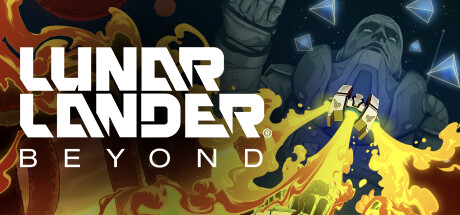

America - Front


America - Back

Dreams Uncorporated
Action-Adventure
 (Add Date)
(Add Date) (Add Date)
(Add Date) (Add Date)
(Add Date)
| Owners: | 0 |
| Favorite: | 0 |
| Tracked: | 0 |
| Wishlist: | 0 |
| Now Playing: | 0 |
Atari has been very busy lately producing reboots of several of its iconic arcade properties. In just the last few years, the legendary game company has dusted off Berzerk, Akka Arrh, Black Widow, and Gravitar, just to name a few. The next game on the list: the vector-based flight sim Lunar Lander, which began its life in arcades in 1979. Thanks to Dreams Uncorporated (Cris Tales), the antique IP has been reimagined as Lunar Lander Beyond, which retains the tense gravity-defying gameplay of the original and surrounds it with new mechanics, a sci-fi narrative, and refined artistic assets.
In Lunar Lander Beyond, players assume the role of the captain of the PSS Beckett, a space hauler under the purview of the Pegasus Aerospace Corporation. It's the year 2182, Earth is shattered, and all of humanity lives on the moon, or on planets beyond. During a routine mission on the lunar colony, something catastrophic happens. Thousands of space-altering portals appear suddenly and inexplicably throughout the solar system, triggering distress calls from Mars, Venus, and Jupiter. As one of the few active ships available, you rush to save those in need, and in the process confront the sinister truth behind the mysterious portals.
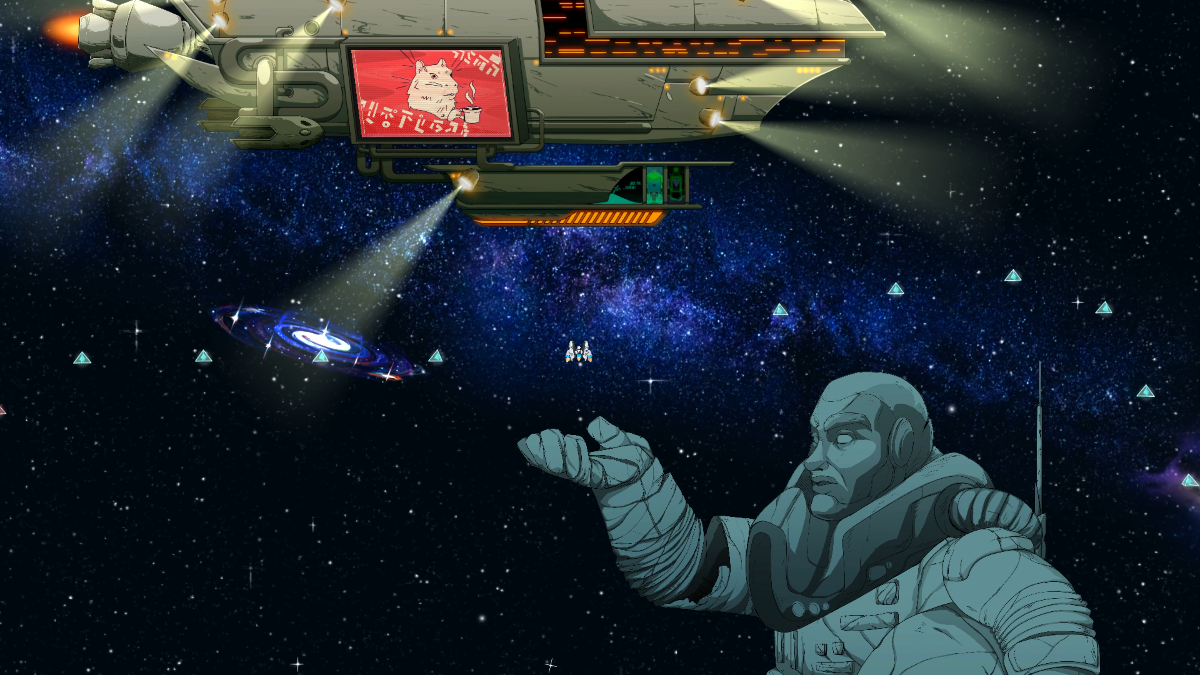
You wouldn't necessarily expect a substantial narrative component in a Lunar Lander game, since the original was a no-frills arcade experience. Yet, perhaps it was exactly that storytelling void that inspired Dreams Uncorporated to craft its own characters, mythology, and plot points.
Judged on these narrative additions, Lunar Lander Beyond is only decent. To be fair, things start off quite strong, as the writers sarcastically riff on a futuristic corporate dystopia in which human life is an expendable asset. At one point a Pegasus executive calls your crew "human insulation" that protects the company's bottom line. There's a funny, subversive quality to the game, particularly in its early stages. Unfortunately, the story doesn't build upon those opening scenes, and then sort of spins its wheels for a while before arriving at a lackluster conclusion. While the game introduces some colorful personalities and flirts with some provocative sci-fi ideas along the way, it never does anything interesting or exciting with them. Ultimately, it's a story that doesn't fully exploit its potential.
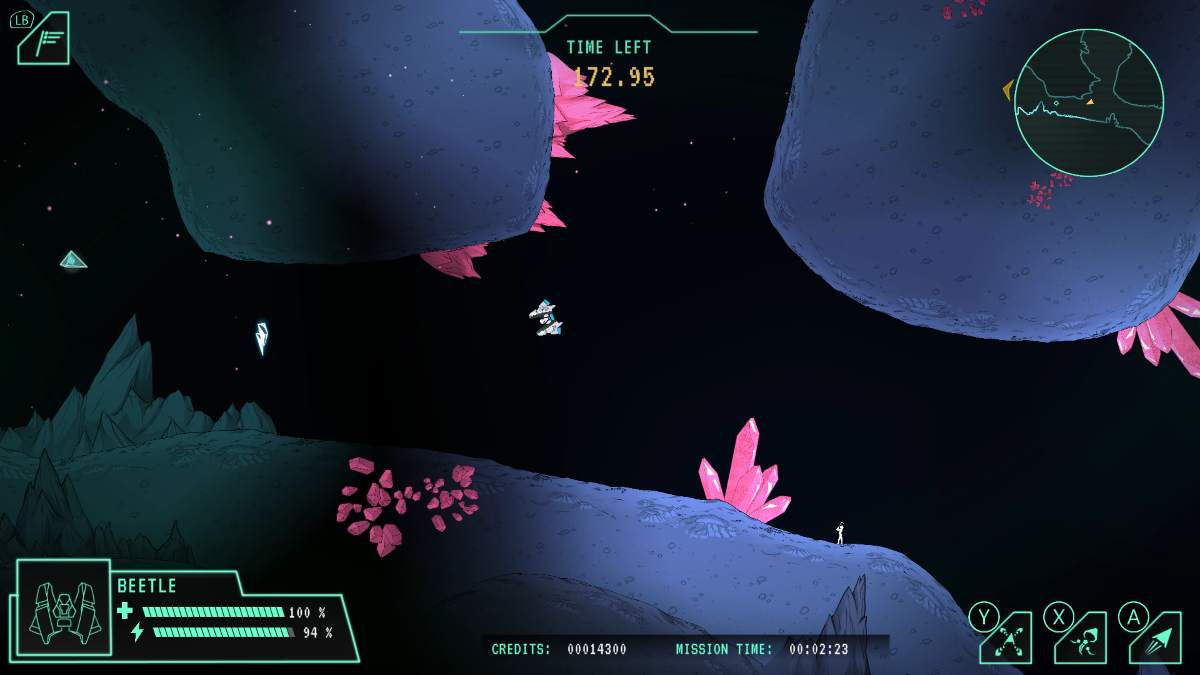
This same issue permeates the gameplay loop in Lunar Lander Beyond. It's a game that seems to want to be a rogue-like, stuck within the confines of a standard, straightforward action title. As the captain of the Beckett, you'll send your pilots on 31 different missions, to rescue citizens, retrieve assets, etc. These pilots will fly and hover around each stage, touching down at designated spots to refuel or pick up resources, and avoiding environmental hazards, deadly drones, and other hostile elements. Depending on the type of ship, you'll enter the stage with more armor, more speed, or more maneuverability. In addition, depending on the individual pilot's personality and traits, you'll enjoy certain boons — for example "High IQ", which doubles the experience points earned.
The way Lunar Lander Beyond treats pilots is very interesting. For each save file, you get two starting pilots, each with a random trait (if the pilot is an "Elite", the trait will be quite powerful). As you use them to complete missions, they will earn XP and level up, learning new traits. They'll also earn credits, which can be used to re-roll the last earned trait. Basically, you can risk your hard-earned money in an attempt to get a superior build. Not only that, but you're encouraged to manage the health of your pilots. If one or more of them absorbs too much psychological damage during flight, you must provide them with counseling, which will heal them but also sideline them for several missions.
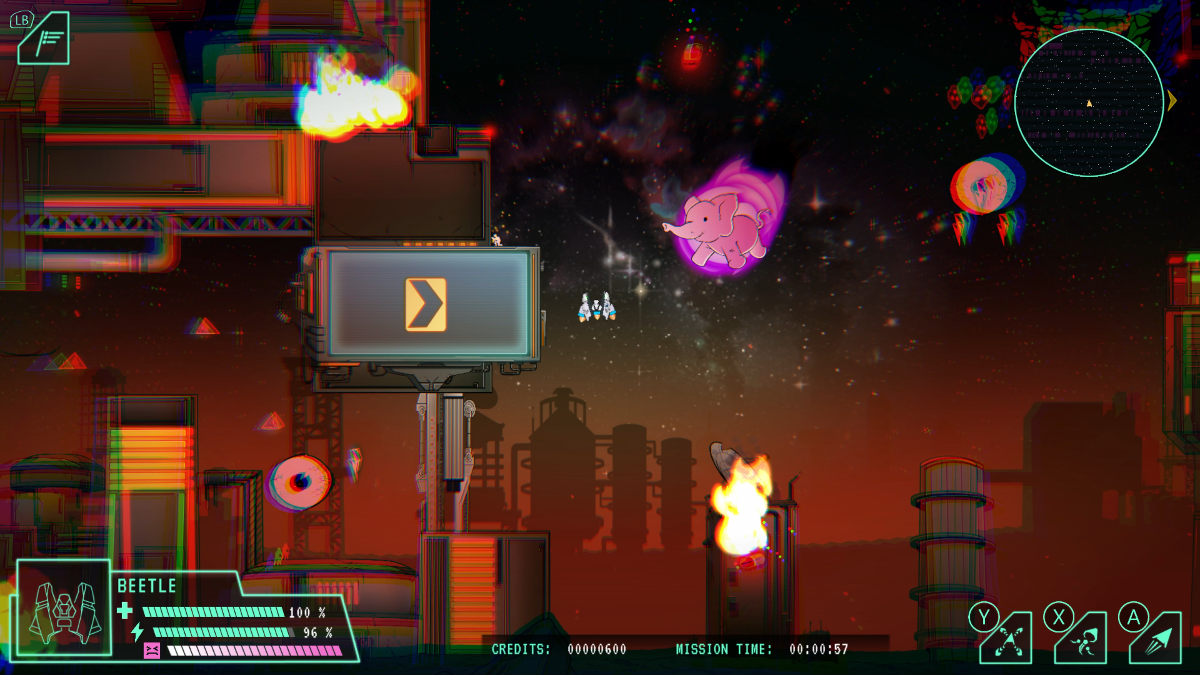
That way psychological damage manifests itself out in the field is one of the boldest new mechanics in Lunar Lander Beyond. If your ship collides with too many obstacles or projectiles, your pilot's "stress" level will rise, which increases the likelihood of several distracting effects. The screen will become hazy and unfocused, objects will transform into strange artifacts, and, if things are truly bad, floating pink elephants will appear and hunt you down.
All these elements — roguish randomness, health management, and sanity mechanics — give Lunar Lander Beyond a unique flavor, but they don't always elevate the proceedings. If you stripped the game of its pilot systems entirely, it wouldn't suffer much; they're simply not essential to the experience. The major exception to this is the "insane" difficulty setting, which introduces a permadeath mechanic. If a pilot crashes in this most challenging of modes, they're gone for good. This is arguably the best way to experience the game — difficulty spikes notwithstanding — since it makes trait and health decisions meaningful. It points to how gripping the game could be if it fully embraced its rogue-like sensibilities.
Playing on the other difficulty settings is perfectly acceptable, though. With over 30 levels and four different ships, there are a lot of things to do and experience. Some levels take place in open areas, while others worm through claustrophobic caverns and subterranean chambers. Better yet, many have secret areas where you can pick up new pilots or ship abilities. Now, not everything is rosy. Many of the stages are short and suffer from samey objectives. While the backdrops and hazards change, the mission parameters rarely do. Indeed, the last level of the moon chapter and the final level of the game are the most memorable, simply because they're so unlike the rest.
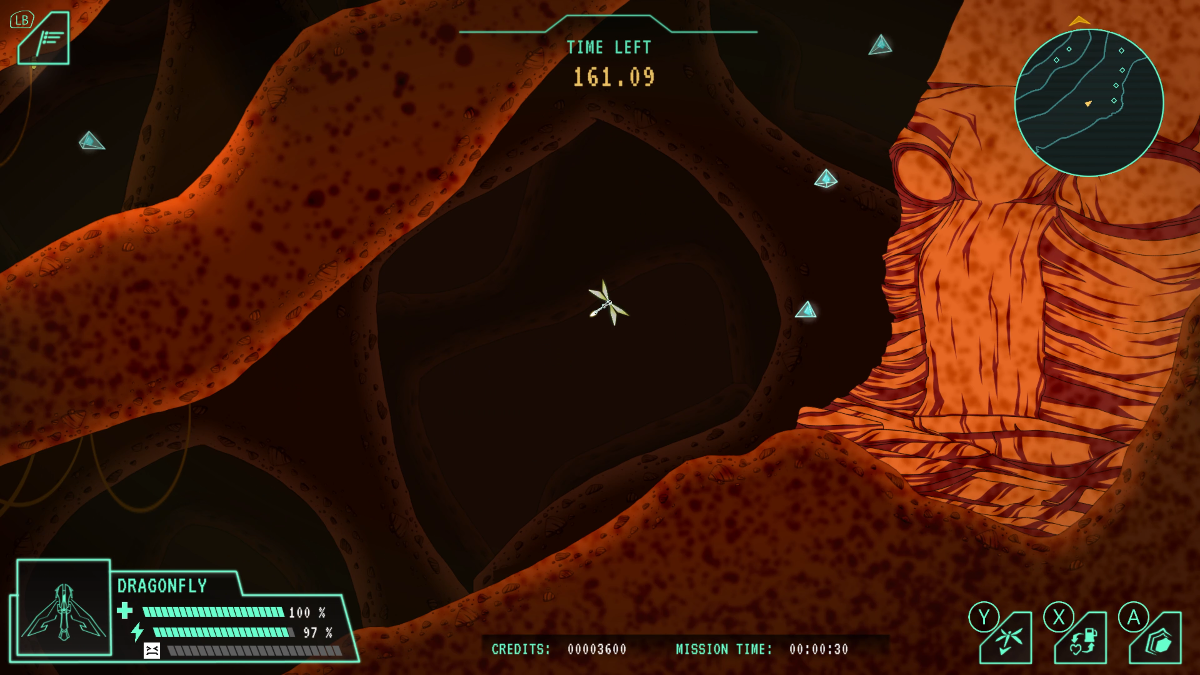
As for the most memorable ship, it has to be the Dragonfly, for reasons both good and bad. The second ship you unlock, it's quite different from the remaining three vessels. For most ships, you use the ZR button to activate thrusters and the left stick to move — similar in spirit to the arcade classic. For the Dragonfly, however, there's no thruster; you just use the left stick to move in the direction you want. As a result, the ship pivots on a dime, and can dart back and forth with zero effort. It handles like a total dream. That's the good part. The bad part is that it makes the other ships superfluous. There's really no reason to experiment with the armored Beetle or the speedy Spider when you can run circles around everything with the Dragonfly. Yes, it's far more fragile and uses much more fuel than the competition, but you can equip it with a shield and refuel it with pick-ups scattered across each map.
The Dragonfly will prove instrumental when you return to completed levels to find all hidden secrets and beat each level par times to earn gold medals. Lunar Lander Beyond isn't a long game — you could rush through in less than four hours and hit every benchmark in only six — but it is one that encourages you to hit that 100 percent mark.
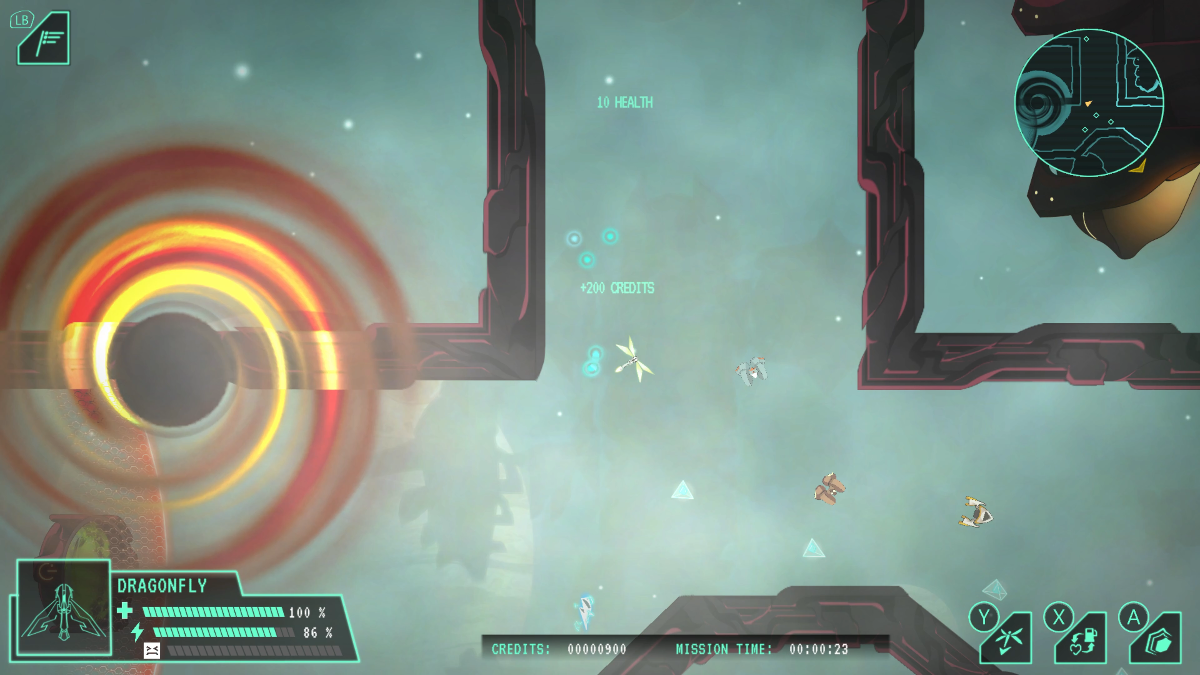
It's also a game that encourages you to admire its beauty. For all its minor flaws, Lunar Lander Beyond is a lovely-looking video game with striking hand-drawn assets and cut-scenes. There's a crisp cleanness to the graphics, amplified by excellent art direction and silly details like tiny citizens running for their lives on the surface. And, because the ship is always small and centered relative to the scenery, you can really appreciate everything around you — not to mention see where you're going in time to avoid a crash. The menu interface is also a lot of fun. It resembles a 1980s computer in a way, and the font looks like the text you associate with vector-based titles like Asteroids, Tempest, and, of course, Lunar Lander.
As for music, it's less impressive than the visual component. While the opening theme is impressive, the other bits are mostly forgettable.
Thanks to publisher Atari and developer Dreams Uncorporated, Lunar Lander gets another chance to shine. The result of their collaboration, Lunar Lander Beyond, is a competent game, yet it could have been so much more. The story starts off strong, but doesn't go anywhere truly exciting. Pilot trait and health mechanics begin with promise, but — outside of the "Insane" difficulty — don't move the needle in a significant way. The level designs are enjoyable at first, but fail to evolve as things move forward. Really, the only area where the game consistently shines is art direction. That's not to say Lunar Lander Beyond is mediocre or majorly deficient — it's actually a fairly agreeable experience, with nice build variety and some intriguing nods to the rogue-like genre — but it feels only partially realized.









